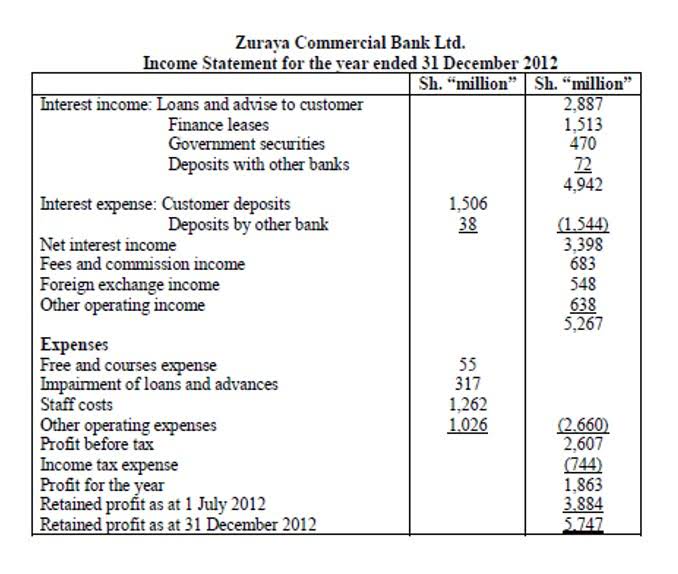
To record receipt of the loan, debit the cash account by the amount of the loan. If you haven’t already done so, create a loans payable account in your books under liabilities. After a few months in business, you decide to take out a business loan to expand. Then, each loan payment will be individual transactions until you pay off the loan. Remember that most loans have interest rates, so you will have to create an interest expense account in your books.
Can you provide examples of how double entry accounting maintains balance?

All types of business accounts are recorded as either a debit or a credit. The purpose of an accounting journal is record business transactions and keep a record of all the company’s financial events that take place during the year. An accounting ledger, on the other hand, is a listing of all accounts in the accounting system along with their balances. Since there are so many different types of business transactions, accountants usually categorize them and record them in separate journal to help keep track of business events.
- Thus, from the cash flows to preparing the balance sheet and other financial documents, this system utilizes the information gathered in various categories, constituting its components.
- This will help you score better than not anyone else, but yourself, thus leading to improvement.
- Bookkeeping is the process of recording and classifying financial transactions into the appropriate accounts.
- On the next page we will present more examples of recording transactions using a comprehensive illustrative case.
- It should help them with ratios like gross profit margin, net profit margin, and other required measures in their operation.
- Entry #4 — PGS purchases $50,000 worth of inventory to sell to customers on account with its vendors.
Practical Application of Double Entry
- Debits decrease revenue account balances, while credits increase their balances.
- Double-entry accounting requires transactions for both sides of the ledger—and balances must match between the entries.
- Now that these transactions are recorded in their journals, they must be posted to the T-accounts or ledger accounts in the next step of the accounting cycle.
- As a result, they can track how much is being earned and what’s being spent.
- In double-entry bookkeeping, you make at least two journal entries for every transaction.
- The new set of trucks will be used in business operations and will not be sold for at least 10 years—their estimated useful life.
- Every individual company will usually need to modify the eight-step accounting cycle in certain ways in order to fit with their company’s business model and accounting procedures.
This allows a bookkeeper to monitor financial positions and statuses by account. One of the most commonly referenced accounts in the general ledger is the cash account which details how much cash is available. With double-entry accounting, common in business-to-business transactions, each transaction has a debit and a credit equal to each other. It gives a report of balances but does not require multiple entries. Cash transactions are the most common type of accounting transaction for most businesses.
Double Entry Accounting: A Comprehensive Guide for Modern Businesses
- You will have no trouble as long as you know how to use debits and credits and what accounts to record.
- These are the purchases that your business makes that aren’t business expenses, but they’re related to your business.
- Adam Hayes, Ph.D., CFA, is a financial writer with 15+ years Wall Street experience as a derivatives trader.
- It also helped merchants and bankers understand their costs and profits.
- External transactions have to do with money flowing to or from external parties.
- Analyzing a worksheet and identifying adjusting entries make up the fifth step in the cycle.
- Besides his extensive derivative trading expertise, Adam is an expert in economics and behavioral finance.
These transactions can include the sale of goods or services on credit. Debit fixed assets transactions involve the reduction of a liability or asset account. These transactions can include payments made to reduce debt or the sale of an asset.
Wrapping Up: What’s Next for Your Business?
To account for the credit purchase, entries must be made in their respective accounting ledgers. Because the business has accumulated https://www.bookstime.com/ more assets, a debit to the asset account for the cost of the purchase ($250,000) will be made. If a business buys raw materials by paying cash, it will lead to an increase in inventory (asset) while reducing cash capital (another asset).

Enter debit and credit amounts
When the company purchased the vehicle, it spent cash and received a vehicle. Both of these accounts are asset accounts, so the overall accounting equation didn’t change. Total assets increased and decreased by the same amount, but an economic transaction still took place because the cash was essentially transferred into a vehicle. Non-accounting transactions do not involve the exchange of economic resources or obligations. Examples of non-accounting transactions include personal transactions and non-business related transactions.
- Accounting transactions are the backbone of any business operation.
- Expenses are recorded as debits in the corresponding expense account and as credits in the bank account or the accounts payable account if the company has not yet paid for the expense.
- One important financial metric that can be calculated from financial statements is EBIT, or earnings before interest and taxes.
- In addition to identifying any errors, adjusting entries may be needed for revenue and expense matching when using accrual accounting.
- This equation represents the relationship between what a business owns (assets), owes (liabilities), and the owner’s investment (equity).
- Ensuring that every transaction balances can feel overwhelming at first, especially when dealing with multiple accounts.
Charlene Rhinehart is a CPA , CFE, chair of an Illinois CPA Society committee, and has a degree in accounting and which transactions are recorded in the accounting system finance from DePaul University. Competing with others isn’t a good option as you don’t know how, when, and what’s their style of studying. And, even if you know, then there’s no point competing yourself with some other person as everyone is unique and has a different aspect of thinking and acquiring things. Compete with yourself, try to hold a record of your previous marks and create a realistic goal for the next exam. This will help you score better than not anyone else, but yourself, thus leading to improvement.

Many companies will use point of sale (POS) technology linked with their books to record sales transactions. Beyond sales, there are also expenses that can come in many varieties. The first step in the accounting cycle is identifying transactions. Companies will have many transactions throughout the accounting cycle. Every individual company will usually need to modify the eight-step accounting cycle in certain ways in order to fit with their company’s business model and accounting procedures.
